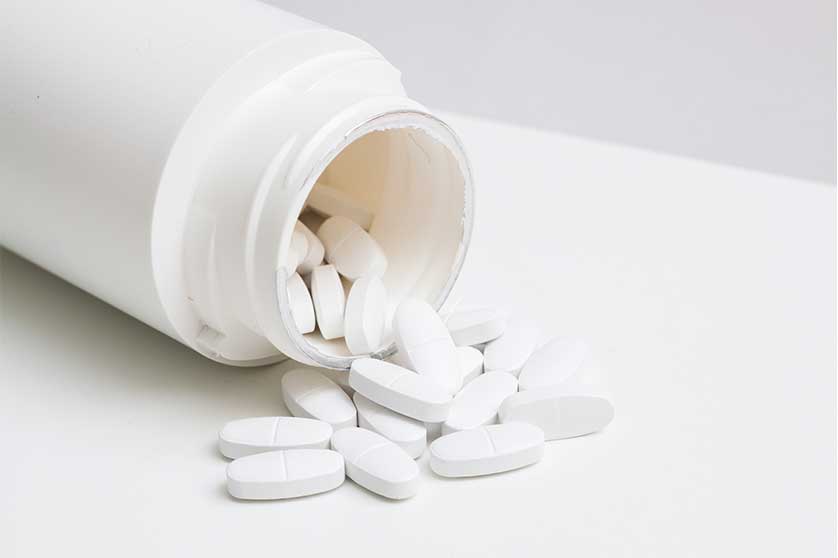Plugging Vicodin | Effects & Dangers Of Rectal Use

Medically Reviewed By: Manish Mishra, MBBS
Rectal use of Vicodin, also known as plugging or booty bumping, can cause side effects such as rectal damage, sedation, respiratory depression, drug addiction, and an increased risk of overdose.

Inserting Vicodin into the rectum, also known as plugging or booty bumping, can lead to strong side effects such as severe impairment and trouble breathing. Plugging Vicodin can also lead to an increased risk of overdose, infections, and long-term drug addiction.
Vicodin is a legal prescription opioid analgesic that can treat chronic pain. The main ingredients of Vicodin are hydrocodone and acetaminophen, and hydrocodone has a high potential for drug abuse.
Plugging Vicodin, OxyContin, fentanyl, and other opiates to get high is a form of illicit substance use. Understanding the risks of unapproved drug use can help you minimize the health risks involved.
Plugging Vicodin
Some opioids and painkillers may be given through suppositories in a medical setting, or when patients suffer from severe nausea, gastrointestinal problems, or other health conditions that prevent oral use.
However, rectal use of Vicodin may not be an approved form of opioid use in at-home settings.
Plugging, snorting, or injecting Vicodin allows the drug to bind to opioid receptors faster than swallowing. You may also feel stronger effects of Vicodin without taking large doses.
Syringes, needles, and homemade suppositories can be used to plug Vicodin. The drug may be crushed and dissolved in a solution or inserted directly into the rectum. These methods of plugging Vicodin are forms of illegal substance abuse.
Effects Of Inserting Vicodin In The Rectum
Plugging Vicodin can lead to strong short-term side effects such as:
- drowsiness
- pain relief
- sedation
- impairment
- constipation
- dysphoria
These side effects may be stronger with higher doses of Vicodin.
Dangers Of Plugging Vicodin
Rectal Vicodin use is not an approved method of drug use due to the potential health risks. Plugging Vicodin can be harmful to your physical and mental health in the long term.
Physical Health Effects
Inserting or injecting drugs in the rectum can damage the rectal area, leading to tearing, damaged blood vessels, and rectal bleeding. Sharing syringes or needles to plug Vicodin also increases your risk of bloodborne diseases, such as HIV and hepatitis.
Safe needle disposal programs in Ohio can prevent the spread of unclean or used needles in the community.
Opioid Overdose
The higher bioavailability of drugs in rectal use can increase your risk of overdose. Previously safe doses taken through the mouth can cause your central nervous system to shut down when plugged. Signs of an opioid overdose can include:
- respiratory depression (trouble breathing)
- unconsciousness
- gurgling noises
- low blood pressure
If you see these signs in a loved one, call for help right away. Carrying and giving victims naloxone can reverse life-threatening opioid overdose symptoms and can help save their life before medical help arrives.
Substance Use Disorder
Rectal use of Vicodin increases your risk of a substance use disorder, a mental health condition where you cannot stop taking Vicodin despite declining health.
Regularly plugging Vicodin can lead to physical dependence, a condition where your body needs Vicodin to function normally. Quitting Vicodin while dependent can lead to painful withdrawal symptoms when trying to stop use.
Treating the physical and mental health effects of Vicodin addiction can be difficult without professional help.
For information on our inpatient drug abuse treatment options such as opioid detox programs, methadone and buprenorphine maintenance, and behavioral therapy, please contact Ohio Recovery Center today.
- Food and Drug Administration — Vicodin https://www.accessdata.fda.gov/drugsatfda_docs/label/2006/088058s027lbl.pdf
- National Library of Medicine: PubMed — Comparison of oral versus rectal administration of acetaminophen with codeine in postoperative pediatric adenotonsillectomy patients https://pubmed.ncbi.nlm.nih.gov/16885758/
- Oxford Academic — Alternative Routes to Oral Opioid Administration in Palliative Care: A Review and Clinical Summary https://academic.oup.com/painmedicine/article/15/7/1129/1877709

